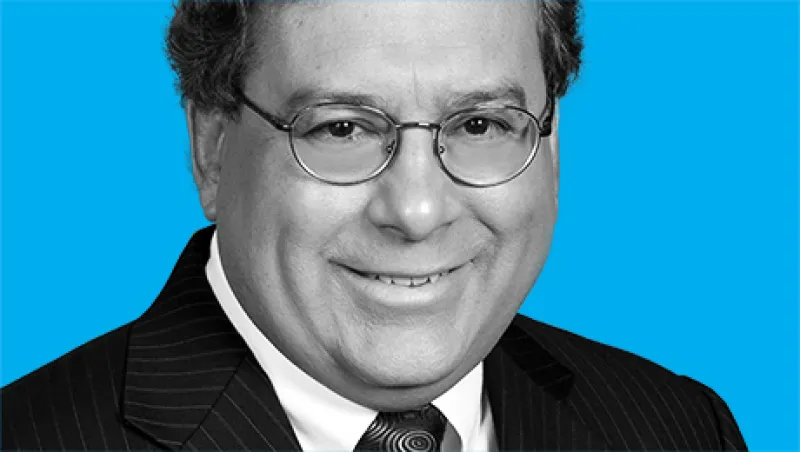In 2006, David Villa didn’t need much convincing to leave sunny Tallahassee and his CIO post at the Florida State Board of Administration (FSBA) for the less balmy climes of Madison, Wisconsin. The State of Wisconsin Investment Board (SWIB) made him an offer he couldn’t refuse: Besides chairing its investment committee and serving as CIO of one of the biggest U.S. public pension funds, he would bring asset management back in-house.
Seeking relief from the rising costs of using outside managers, SWIB’s nine-member board of trustees hired the right person for the job. Today Villa, 62, oversees a $93.3 billion portfolio, 64 percent of which is invested in-house, versus 20 percent when he started.
Before joining the FSBA in 2004, the Albuquerque, New Mexico, native, who holds a master’s in economics and Latin American studies from Stanford University and an MBA from Northwestern University, worked in auditing at Arthur Andersen’s Chicago office and in global operations management, asset allocation and client relationship management at Chicago-based investment firm Brinson Partners, which was rebranded as part of UBS Global Asset Management in 2002.
Each year SWIB trustees must justify to the Wisconsin state legislature the relatively high salaries of investment professionals that come with building an internal asset management operation, a feat that has proven difficult for other U.S. public pension plans and even for universities like Harvard. Thirty years ago the entire SWIB defined benefit portfolio was managed in-house, with most assets in fixed income and about a third in listed equity. But as the fund enlisted more outside managers over the years, internal management waned.
During his ten years at SWIB, the U.S.’s ninth-largest public pension fund, Villa has overseen a return that is 0.19 percent below the median for its peers with more than $5 billion in assets, according to the Wilshire Trust Universe Comparison Service: 5.8 percent versus 5.99 percent. Balancing these results are SWIB’s lower costs: 0.23 percent less than for its peer group of 57 large U.S. public pension funds, Toronto-based research firm CEM Benchmarking reports.
Senior Writer Frances Denmark recently spoke with Villa about his decade building an internal asset management program.
What is the biggest challenge to creating an investment management company within a government institution?
Competing for and retaining talent is the first challenge. I emphasize to the board that their strategy involves taking on and accepting the war for talent. We don’t want to hire our fourth or fifth choice; we want to hire our first or second. And you don’t want to become a recruiting and training ground for Wall Street.
The second challenge is to structure the organization and create incentives that encourage collaboration across teams. There can be a tendency for investment professionals to maintain intense focus on a narrow research agenda and miss opportunities to collaborate with others who have different points of view and different talents and approaches to analysis. For example, analysts in equity, fixed income and private equity could all be working in the energy space, so there should be lively discussion and debate about the critical issues.
What have you done to boost internal management?
We have created an environment where investment professionals want to stay and work. We promote the values of being research- and analyst-driven and dedication to a life of learning. Investment staff are expected to keep up with the frontiers of knowledge. Their incentives are tied to portfolio outcomes as well as original research that they must perform to advance in their careers. It is extremely important for the investment professionals to feel that their ideas are reflected in the portfolios and that their compensation is based on their contribution.
Over the past ten years, we have tried to make SWIB an analyst-driven organization. To exemplify the importance of high-quality research, we host visiting professors from the nearby University of Wisconsin to help drive new ideas on a broad range of financial, economic and other subjects.
Which asset classes have external managers, and why?
We utilize external managers in all areas of the investment structure. However, the primary use of external managers is in hedge funds, emerging markets, high-yield bonds and private equity. We are attracted to external managers that have persistent value added and that allow SWIB to retain the majority of the true value added.
We define true value added as the excess return after subtracting the embedded market returns and adjusting for leverage. We believe that many external managers have skill. The problem is that most of the true value added is paid away in fees to the external manager, and therefore the investors receive a small fraction of it.
How have you structured SWIB’s investment office?
We took down the departmental silos and continue to emphasize the importance of working across all the asset classes within the investment platform. One example is the way we think about oil. Oil is important to investors in public equity, high-grade and high-yield fixed income and currencies, and has implications for inflation or deflation expectations. We have professionals throughout the organization who are interested in oil, so they collaborate outside of their own portfolio teams. The same philosophy applies to the high-yield market, where we watch issuance and defaults very closely across the investment platform.
In the case of oil, we have been tracking the issuance of speculative debt in the industry for three years. We are not surprised by the increase in defaults based on the developments in the credit markets as far back as 2013. Similarly, we are skeptical that energy companies can actually operate without stress at prices below $60 per barrel, because we have deep insights into the industry through our private equity relationships. If the organization operates in silos, the insights are lost.
What are your plans for the future?
We have three major strategic initiatives. First, we are a little over halfway through a technology conversion from an accounting to an investment book of record that is more in line with the way we manage risk and allows us to take advantage of state-of-the-art investment technology. New technology is essential to our second project, building an alpha-beta overlay, or synthetic market exposure, that will work in conjunction with our portfolio of 25 low-volatility hedge funds. Finally, in January we launched a multiasset capability after a four-year incubation period. It allows us to manage both market and active risk across all asset classes and strategies. In ten years it is the furthest away we’ve been able to come from managing assets in silos.






